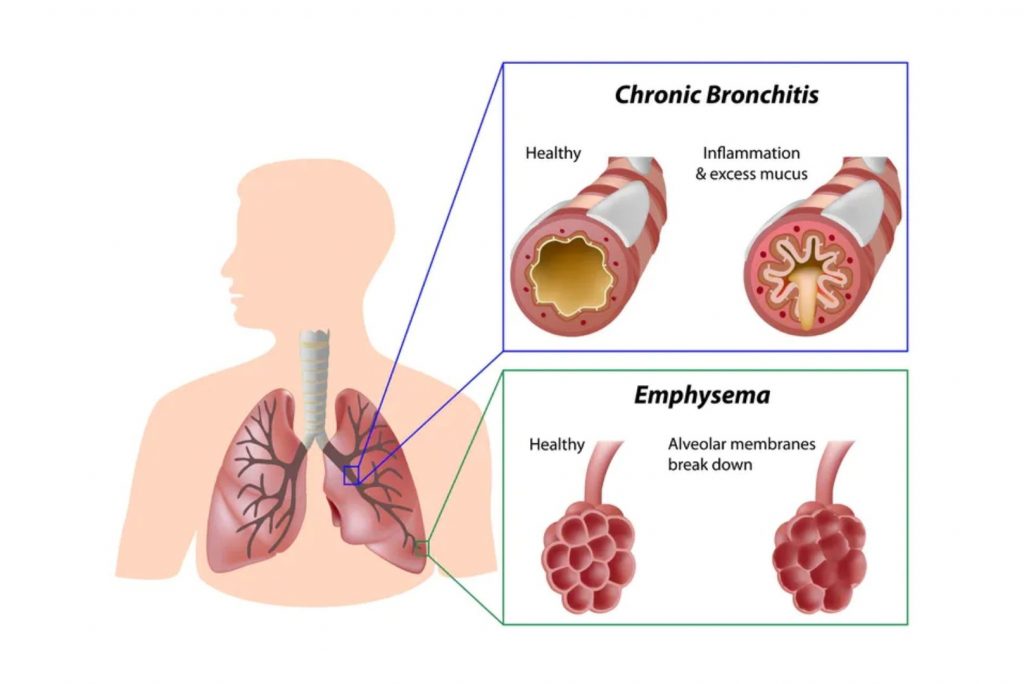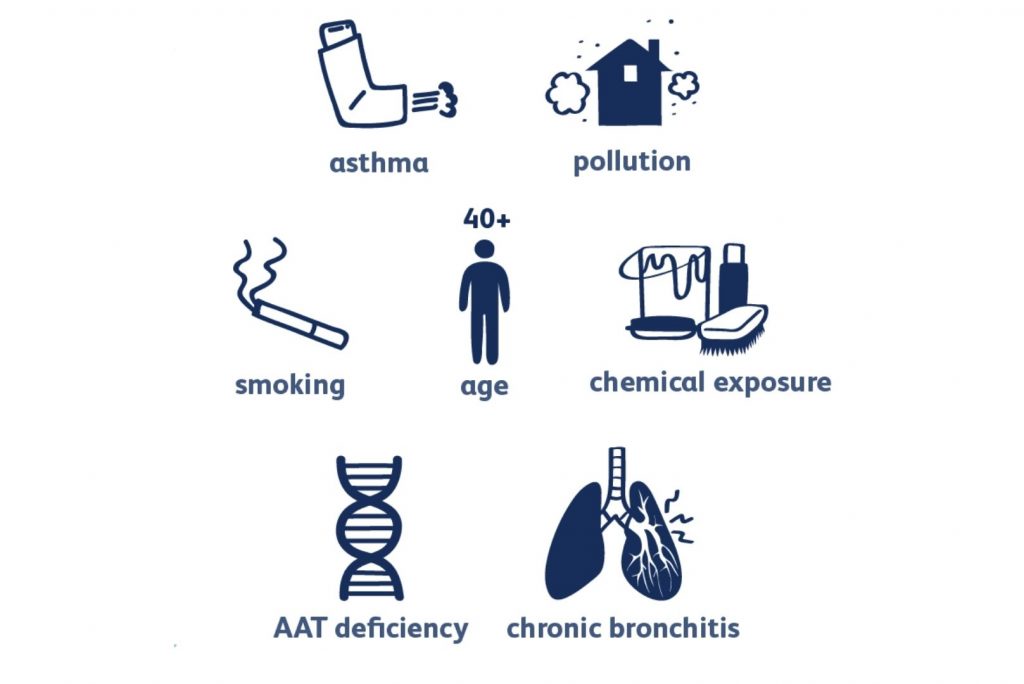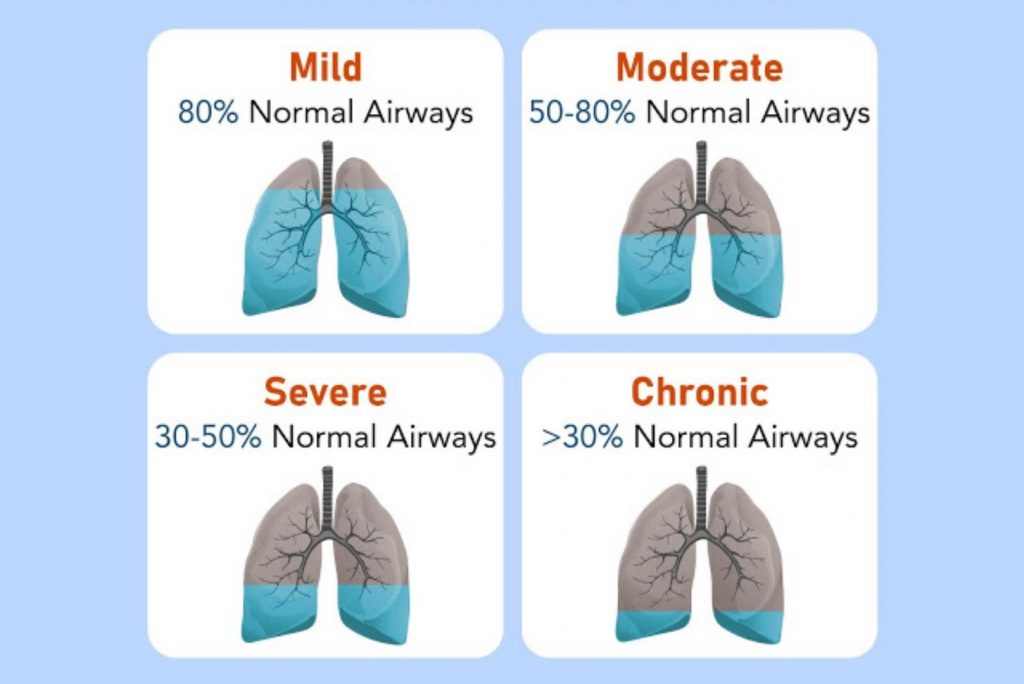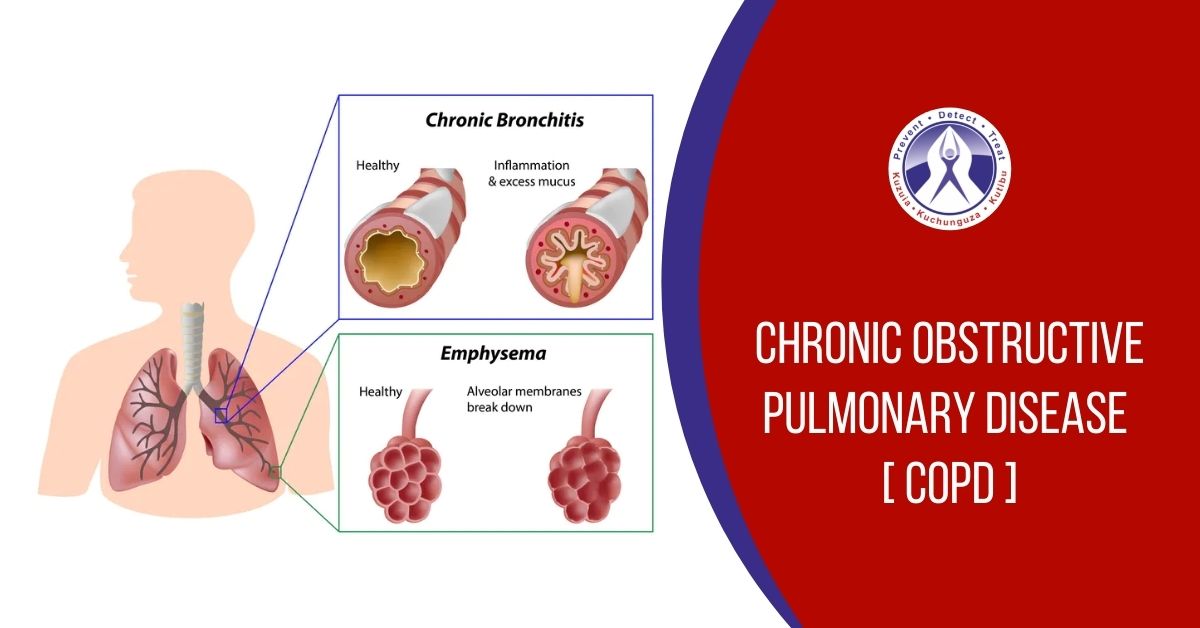AN INFORMATION GUIDE TO- ‘CHRONIC OBSTRUCTIVE PULMONARY DISEASE’
2,188 viewsChronic Obstructive Pulmonary Disease (COPD), against the common perception, is not a single disease but a group of progressive lung diseases. Respiratory failures, caused by COPD, account for a major cause of mortality. Thus it is important that we are aware of this disorder, its symptoms, and treatment so that immediate action is taken when the time comes.
WHAT IS CHRONIC OBSTRUCTIVE PULMONARY DISEASE?
As the name suggests, it is a long-lasting, inflammatory lung disease that obstructs the airflow from the lungs making it harder and harder to respire. Since COPD is an umbrella disease and there are other lung diseases as its sub-disease, let us have a look:
TWO PRIMARY SUB-DISEASES ARE

- Emphysema: In this condition, lung tissues lose their elasticity. As a result of which air sacs (alveoli) become larger causing them to break or narrowed and be destroyed. The surface left for the lungs to absorb oxygen in the blood and remove carbon dioxide from the body is minimal leading to permanent lung damage. Symptoms include shortness of breath, a chronic cough causing mucus, tightness or heaviness in the chest, and a squeaky, wheezing sound while breathing.
- Chronic Bronchitis: Coughing is the body’s mechanism to remove harmful and unwanted substances from the body, but if this coughing stays on for at least 3 months in a year for 2 years then you might have a serious bronchitis condition. Our lungs have this hair-like fiber called the cilia line in the bronchial tubes which help the body in the removal of mucus. However, when you lose this cilium that is when the mucus starts accumulating and you start coughing more and more. Symptoms involve coughing with mucus, shortness of breath and extreme tiredness, wheezing while breathing, and heavy chest.
Now that we know what COPD is and what other diseases constitute COPD, let us look at what are its causes-
CAUSES OF COPD

- The root cause of COPD extends to the intake of smoke by tobacco or cigarette. Fact says that 90% risk of developing COPD can be traced to tobacco. Passive smoking also leads to increased chances of getting affected by it.
- Another important reason could be exposure to areas with extreme air pollution. Localities around coal industries or other smoke-emitting or chemical industries are prone to the risk of getting affected by COPD.
- There are also chances that existing infectious diseases like asthma which might have already affected lung tissues can cause COPD.
- Lastly, a very rare possibility could be your genes. In cases where inherited genes lack a protein called alpha 1 antitrypsin (AAT) can eventually cause COPD.
DIAGNOSIS OF COPD
Now it becomes extremely important for a patient to understand the importance of getting diagnosed. Neglecting to cough will only make situations worse, we will discuss that in the following section. But first, you need to visit a pulmonologist and brief them about your medical history, symptoms, a smoker or not, exposure to dust and smoke along with a lot of other details. The pulmonologist will then conduct a test called spirometry where the patient will be asked to breathe into a large, flexible tube that’s connected to a machine called a spirometer. This will measure the amount of air the patient’s lungs can hold and how fast he/she blows air out of them. After the test, the pulmonologist determines that at which present stage of COPD does the patient stand?
STAGES OF COPD

There can be multiple classifications of stages based on different parameters but here, we must follow stages from the Global Initiative for Chronic Obstructive Lung Disease’s (GOLD) guidelines derived from spirometry breathing tests. These stages are:
- Stage 1– Mild COPD: This is the first stage where it is difficult for the patient to identify an abnormality in their lungs because of very mild difficulty in airflow. Some might also experience coughing sputum, a mixture of mucus and saliva.
- Stage 2– Moderate COPD: Stage two is where people tend to have some unusual breathlessness during exercising and airflow in the lungs starts worsening. In usual cases, a patient seeks medical assistance at this point.
- Stage 3– Severe COPD: As the name goes, the condition and the quality of life of the patient start depleting. Recurring episodes of shortness of breath with minimal exertion, greater restriction to their airflow, and increased tolerance to exercise lead to a miserable condition.
- Stage 4- Very severe COPD: This is the extreme situation where breathing becomes so restrictive that it seems life-threatening and an immediate external oxygen supply is required. The patient’s body is almost intolerable to any kind of physical strain and immediate treatment is to be given.
TREATMENT OF COPD
Now, depending upon the severity of the condition, a pulmonologist might recommend either any one or a mix of the following measures:
- Medications: Medications account for bronchodilator inhalers which relax lung muscle, making it easier for the patient to breathe. Inhalers might be prescribed depending upon the stage of COPD. For example- for mild COPD, short-term inhalers are prescribed, for someone with moderate to severe COPD, a mix of short and long-term inhalers are advised and for someone with severe COPD, inhalers accompanied with steroids may be an option.
- Vaccines: Another effective way is to get vaccinated beforehand to reduce the risk of any respiratory infection.
- Oxygen therapy: A person with severe COPD might have to be put on an oxygen therapy where oxygen is externally provided using masks and cylinders. It helps in protecting other organs like the heart and helps the person in performing their usual everyday activities with reduced symptoms.
- Surgery: In case the pulmonologist sees no other resort to restore the affected lungs then the last option available is to get a lung transplant. However, this completely depends upon the type of COPD, the stage it exists in, the individual’s recovering ability, and a number of other factors.
- Lifestyle changes: For recovery, it is indeed extremely important to make certain changes. Quitting smoking tops the list of changes. A person cannot expect comfortable breathing but with constant inhaling of smoke. Apart from this, maintain a proper diet with all the required nutrients, regularly performing breathing exercises suggested by your pulmonologist, and attending pulmonary rehabilitation that teaches management of pulmonary diseases.
Conclusion
Here we come to an end to this guide. It is important to keep a tab on changes taking place in our body and responding to those changes. Chronic Obstructive Pulmonary Disease, if neglected and not treated within the due course of time, can easily become a cause of death. Thus it is always advisable to consult a pulmonologist and clear all the lingering doubts. At Regency Medical Centre, we offer the services of the best pulmonologists in the field so in case you want an expert’s opinion, CLICK!


